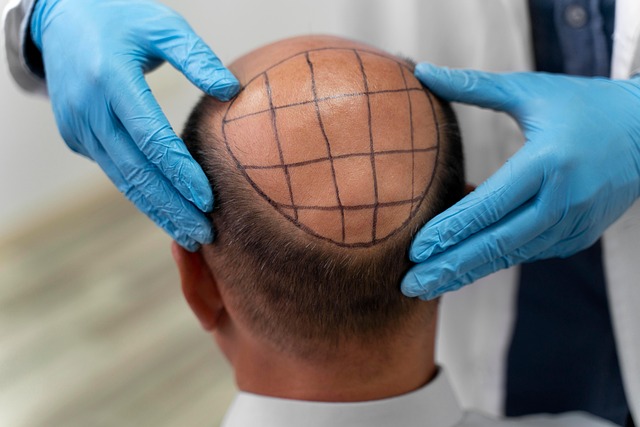Modern Hair Transplants: Long-Term Solution for Baldness
Hair loss and baldness affect millions, and many seek a lasting fix. This article explains how hair transplant procedures work, compares FUE and FUT techniques, describes who benefits most, outlines recovery expectations, and summarizes costs and financing options. Learn what to expect and how to prepare for a successful hair restoration journey.

Modern Hair Transplants: Long-Term Solution for Baldness
How hair transplantation works
A hair transplant replaces lost hair by relocating healthy follicles from a donor region to thinning or bald areas. The process starts with a detailed consultation where a specialized surgeon evaluates your hair loss pattern, inspects donor-area density, and maps out realistic goals. Once a plan is agreed upon, the procedure proceeds through a series of careful steps:
-
Harvesting: The surgeon removes follicles from donor zones, typically the back or sides of the scalp where hair is genetically resistant to balding.
-
Preparation: Extracted grafts are cleaned, counted, and sorted by size to match the recipient sites.
-
Recipient site creation: Tiny incisions are made in the thinning areas, with each incision angled to mimic natural hair direction and density.
-
Implantation: Individual follicular units are placed into the prepared sites with attention to spacing, angle, and distribution for a natural-looking result.
A single session can last several hours and may be longer for extensive restorations. Local anesthesia is commonly used so patients stay comfortable throughout the operation.
Transplant techniques: FUT, FUE and advanced options
Two primary approaches dominate modern practice:
-
Follicular Unit Transplantation (FUT): Also called the strip method, FUT involves excising a thin strip of scalp from the donor area, then dissecting it into individual follicular units under a microscope. FUT can yield a large number of grafts in one session but leaves a linear scar at the donor site, which may be noticeable with very short haircuts.
-
Follicular Unit Extraction (FUE): With FUE, individual follicular units are harvested directly from the donor area using a small punch tool. This technique minimizes visible scarring, shortens recovery, and allows flexibility in harvesting across the scalp or body.
Advanced FUE systems, including robot-assisted platforms, can improve precision and speed in some clinics. The best option depends on hair loss pattern, donor availability, scarring concerns, and the surgeon’s experience. Your surgeon will recommend the most appropriate technique for your goals and anatomy.
Who is an ideal candidate?
Hair transplantation offers the most predictable results for certain profiles:
-
Adults, typically 25 years or older, because hair loss patterns stabilize with age. Younger patients may still be shedding, which can complicate long-term planning.
-
Individuals with androgenetic alopecia (male or female pattern hair loss), which produces stable donor follicles suitable for transplantation.
-
People with sufficient donor hair in the back or sides of the scalp (or body hair in selected cases).
-
Patients in good general health without conditions that impede healing, such as uncontrolled diabetes or certain autoimmune disorders.
-
Those who have realistic expectations and understand that multiple sessions or adjunctive therapies (such as medications or PRP) may be needed to achieve ideal density.
A thorough consultation and medical history help determine candidacy and set achievable goals.
Recovery timeline and aftercare
Recovery is generally manageable but requires careful aftercare:
-
First days: Expect some tenderness, redness, and mild swelling. Pain is usually controlled with prescribed or over-the-counter analgesics.
-
First week: Most patients return to non-strenuous work within a few days to a week. Strenuous exercise and activities that risk bumping the grafts should be avoided.
-
Shedding phase: Transplanted hair commonly sheds within 2–3 weeks — a normal part of the grafts entering a rest phase before regrowth.
-
New growth: Visible hair usually begins to appear around 3–4 months, with continuous improvement over the following months.
-
Final results: Full thickness and aesthetic outcome are typically evident between 12 and 18 months after the procedure.
Follow-up care often includes special shampoos, topical or oral medications, and guidance on sleep positions and scalp protection. Adhering to post-op instructions maximizes graft survival and overall results.
Typical costs and financing
Costs vary widely by geographic region, clinic reputation, technique, and the number of grafts required. Below is a general pricing overview.
| Procedure Type | Average Cost Range | Factors Affecting Price |
|---|---|---|
| FUT (Strip Method) | $4,000 - $15,000 | Number of grafts, clinic location, surgeon experience |
| FUE | $4,000 - $20,000 | Number of grafts, manual vs. robotic extraction, clinic reputation |
| Advanced FUE (e.g., robotic-assisted) | $5,000 - $25,000 | Technology used, extent of procedure, additional services |
Prices are estimates and can change over time. Most hair transplants are considered cosmetic and are not covered by insurance. Many clinics provide financing plans or payment options to spread the cost.
Final considerations
Hair transplantation can be a life-changing option for those bothered by thinning or baldness, offering durable and natural-looking results when performed by an experienced surgeon. Success depends on realistic expectations, sufficient donor hair, and careful post-operative care. Before committing, consult a board-certified or otherwise qualified hair restoration specialist to review your medical history, photos, and a personalized treatment plan.
This article is for informational purposes only and should not be considered medical advice. Please consult a qualified healthcare professional for personalized guidance and treatment.






